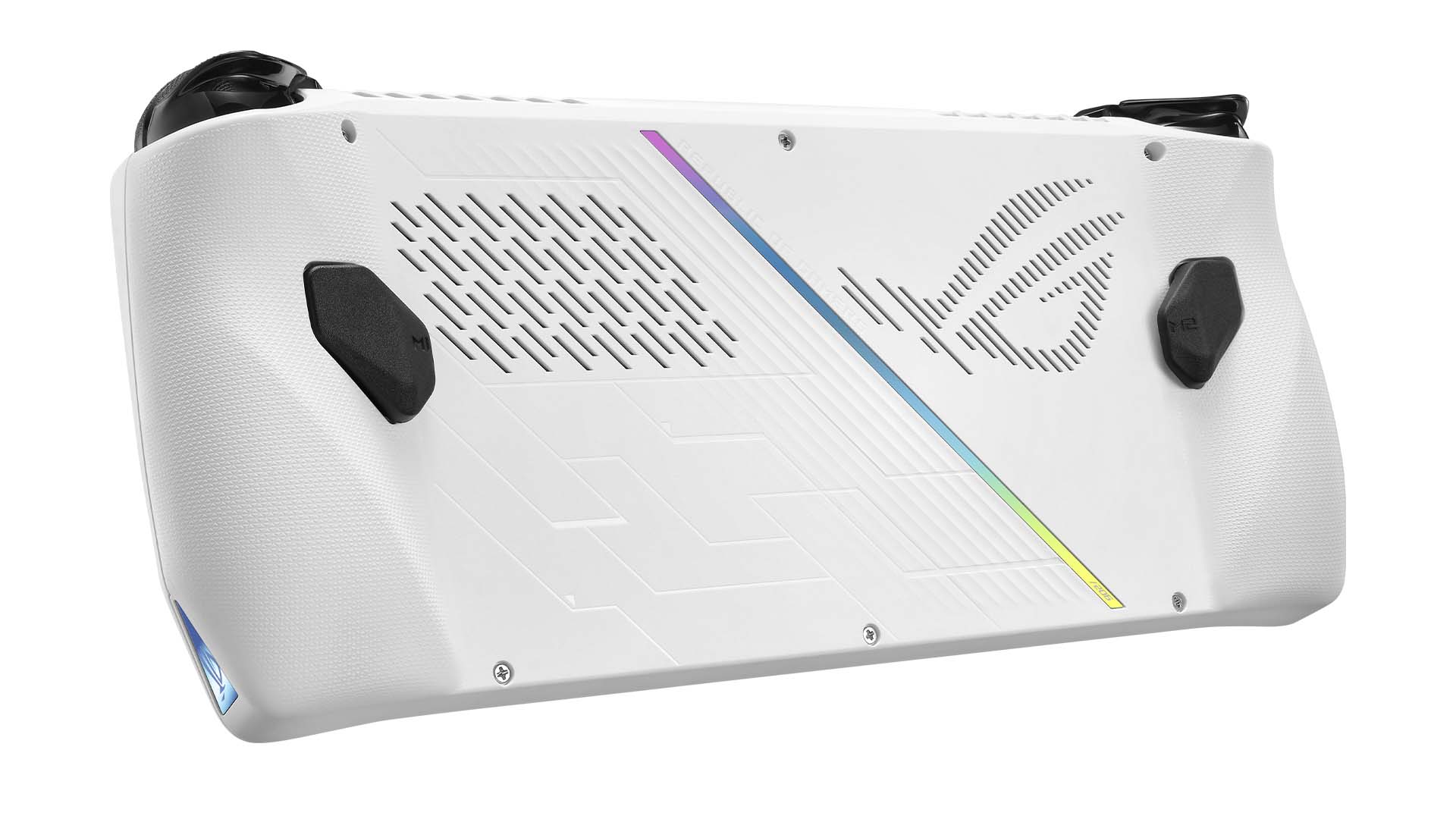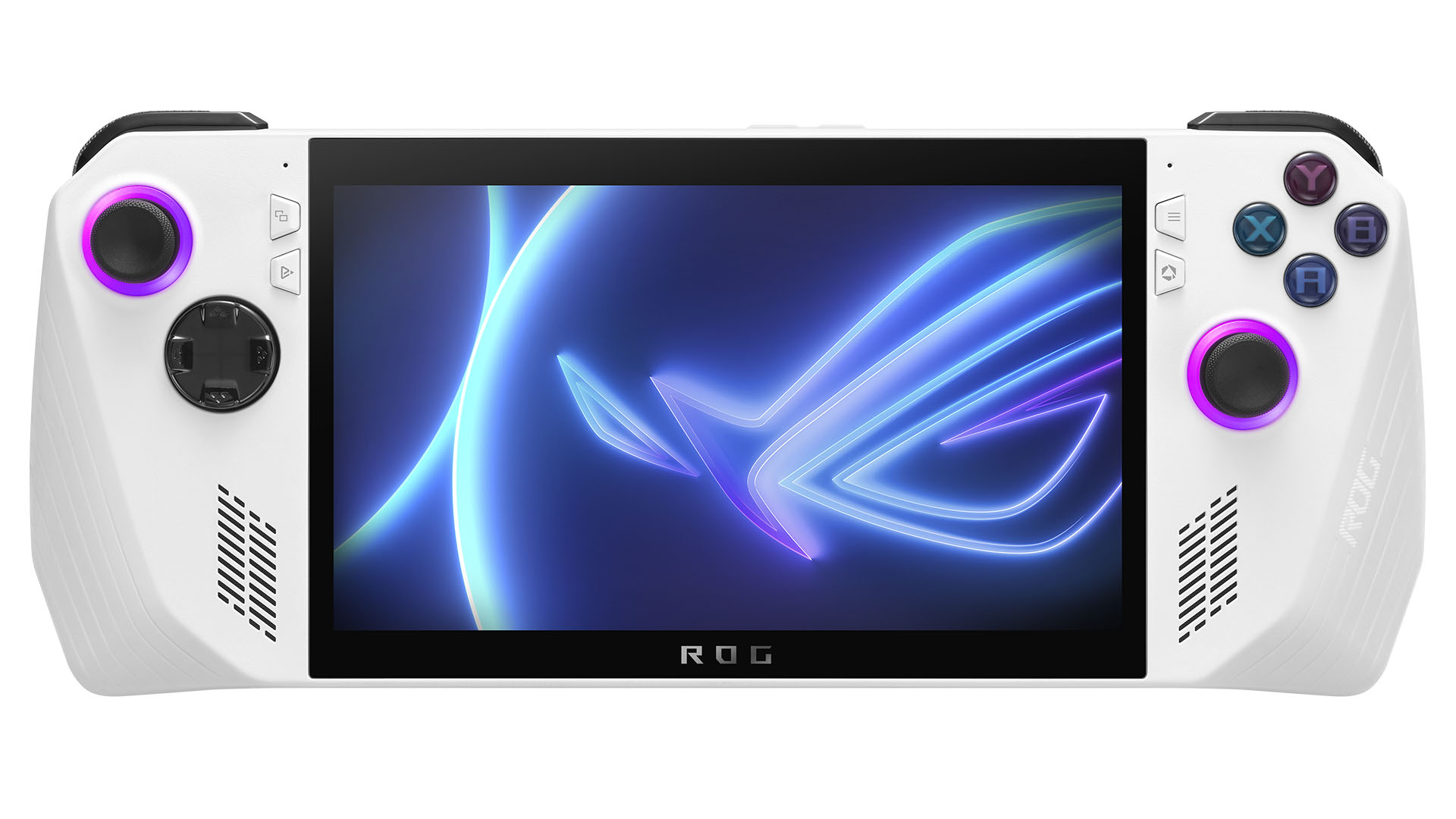Asus ROG Ally review
There’s a few things you need to know about the Asus ROG Ally before you even consider picking one up. First of all, I’d wager that it’s the best way to get the highest performance with a 1080p screen you’re going to see in a handheld, or rather, portable PC for quite a while, even at the price point. Second of all, you need to get it really crystal clear in your head that this is not a Steam Deck, it’s more like a handheld Windows laptop, with all of the other things that owning one of those entails.
Sure, you can boot up the Rog Ally into a “gaming mode” or sorts using the included Asus proprietary software that, until the Ally had been considered bloatware by many laptop owners. You can even make it so that Steam loads into big picture mode, giving you a more “Deck-like” feel to that storefront. But that’s kind of missing the point. After spending a few months with the Ally, and previously nigh-on a year with the Deck, the conclusion I came to is more that one is an Android device, and the other an Apple product.

Which is to say one is bordering on open source, welcoming all manner of storefronts, inputs, and pretty much plays any game going from anywhere, as long as you’re willing to tinker with settings and power modes. The other, well the other doesn’t really want you to do any of that, and wants you to just use Steam, unless you’re happy to get learning to use a Linux Operating System, and even then, it still kind of doesn’t want you to do all of that, really.
The Asus ROG Ally has so much going for it in this regard. Booting up a heavy duty title I could boost the frames per second output by simply switching to an increased power draw. Genuinely, after so long with other devices, and knowing the Ally has a 1080p screen, I was pretty startled to see some of the higher frame rates this high power mode could produce. It’s not necessary for smaller games, and with something like Dave the Diver you can save power and lose nothing. I even tested older games like Crackdown 3 (which I could do simply by loading up the Game Pass app on the Ally, with zero tinkering) and was pleasantly surprised again by it handling all the explosions and movement that the title offers.
Now it’s worth noting at this point that pushing the Ally via the higher power draw modes means that you will lose battery life. This is an area of great discussion among owners of any handheld devices, and is something only you can decide. Personally, it’s rare I spent longer than an hour playing a portable gaming device, and I’d top out at 90 minutes. For me, the Ally works here, because the battery life is one of the few marks against it. Especially on higher power, but even on the middle setting (which you’ll use most of the time) you will never get much longer. Silent mode drops the power draw right down, but aside from very few indie titles that are lacking any graphical intensity whatsoever, the frame-rate drop was consistently too much to bear, while some games (Remnant 2, though pre-release so it may be fixed since) literally crashed in this power mode.

Being essentially a Windows Laptop in handheld form, there are options to tinker and find middle ground for these settings, and it’s doable, but I’d assume most people wouldn’t really want to go into this much more than switching from Performance (mid) and Turbo (high power). You can drop your screen resolution to 720p to squeeze a bit more life out of the battery (and push the frame rate for some titles to nearer 60fps), and while it offers a 120Hz refresh rate, it’s not often you’re going to be making much use of that on the go.
The option to be near a plug and just stay on power using Turbo is an option too, and I remain slightly unconvinced people are whipping out their Ally or Deck, and the like in public as often as marketing might suggest, but just know that for a triple-A, graphically intensive title, on Turbo mode you’re looking at getting an hour of battery life, tops. Is the battery life good enough? In truth, no. Are any of the top tier handheld consoles that much better? It’s negligible; even the Switch took multiple revisions to get anywhere close to acceptable, there.
The screen itself is superb, though. The crystal clear LCD touchscreen display is the best I’ve seen on a handheld console outside the Nintendo Switch OLED model, though it offers a higher refresh rate and resolution against Nintendo’s offering. A small thing to many, perhaps, as users will likely be wearing headphones with the Ally, but the speakers are incredibly loud, and offer superb faux-surround sound if you do play without headphones. I was genuinely taken aback at the volume the speakers can get to, while retaining clear sounds.

Asus has managed to squeeze a lot of power into a smaller form factor than I expected. The Steam Deck is a unit that, when you first see it, takes your breath away at the sheer size, and the ASUS Rog Ally is just a lot smaller, lighter, and after a good period of time, more comfortable. The sticks and shoulder buttons are excellent, and although I experienced some stickiness with the face buttons, I have to assume that’s down to it being a review unit other people have used, and that new units wouldn’t suffer this issue. The rear buttons feel pretty cheap and plastic compared to the rest of the unit, but are programmable to give you more comfort or the edge in certain games, but I found myself using the default controls for most games, usually.
The fingerprint scanner means you can lock your Windows device, and offers an extra layer of security, and the option buttons that are Asus-based (command centre, etc) all get used and are pretty decent. Software wise, this is a Windows 11 PC, and it all works as you’d expect, though I did find some peculiarities with the proprietary ASUS software. Some games would double up; sometimes they wouldn’t add to the launchers, and sometimes I even found that launching a store from within the Asus apps I wouldn’t have remained logged in, because it seemingly thought it was a different instance, or version, of the launcher I wanted to use. More often than not a restart would solve any issues, and ASUS seems to be regularly tinkering with firmware and bios updates to try and keep the Ally up to date.
There’s no getting around the price point, really, but that’s why I think it’s important to slightly shift your mindset from that of buying a portable gaming device, to buying a Windows 11 Laptop in a portable gaming configuration. With a dock, you’ve got a gaming PC here, though not a high end one. You can use it as a word processor, scroll social media, or just hook up a mouse and keyboard and answer your work emails. If you were going into the market to buy a proper, high-end gaming laptop, though, you’d have to spend a whole lot more than what an Asus ROG Ally would cost you.

While Asus has tried to make the Armoury Crate software feel partially like an operating system, I’d still say the best way to use the Ally is to treat it like a PC. Boot Steam like you would on a gaming PC, run your games from shortcuts, or their respective launchers, and you’ll basically be able to play anything you want on a PC without worrying about too much at all. If you’re happy to tinker and get even better performance, that’s an option, here. Even with my relatively short time with the unit, it’s gotten more stable, and become my go to portable PC simply due to the ease of access to things like Game Pass, Epic Games, and the Blizzard launcher.
While it does lack things like a trackpad, and while Windows can be a bit cumbersome to navigate via a combination of touch and an analogue stick (it’s worth noting there’s no tutorials here, you’ll need to read the manual or google to find out shortcuts, and how to enable keyboards, as this is a Windows PC after all), the performance and accessibility of unlocking the entirety of a PC gaming library make it the best way to play PC games in a handheld configuration right now.
The Asus ROG Ally reminds me of the older days of PC gaming, where you had to spend a bit of time getting things just right to get the best performance. While that’s not always the case, and most things just work fine out of the gate, I really do love this thing, and feel like it’s just going to get better and better.




